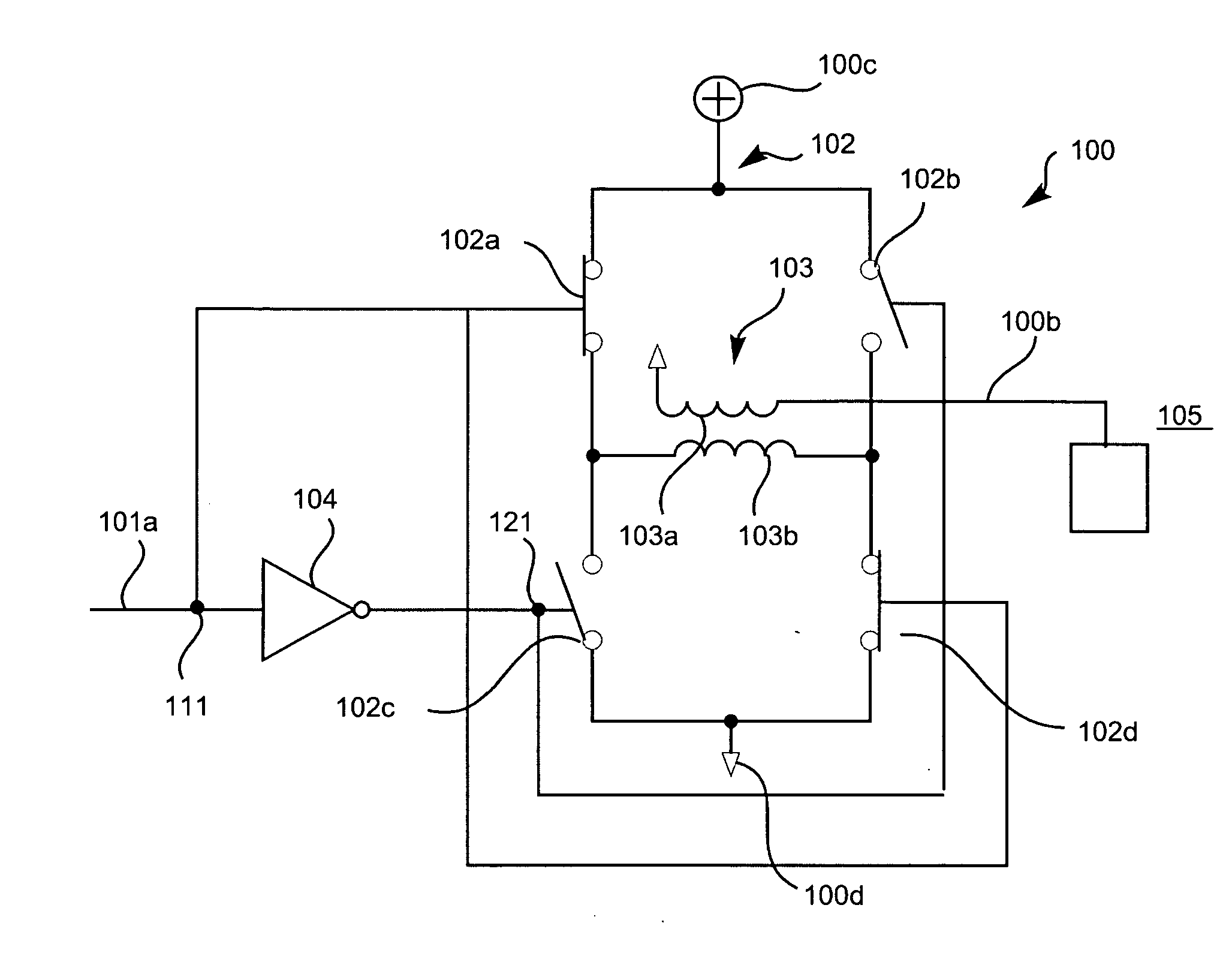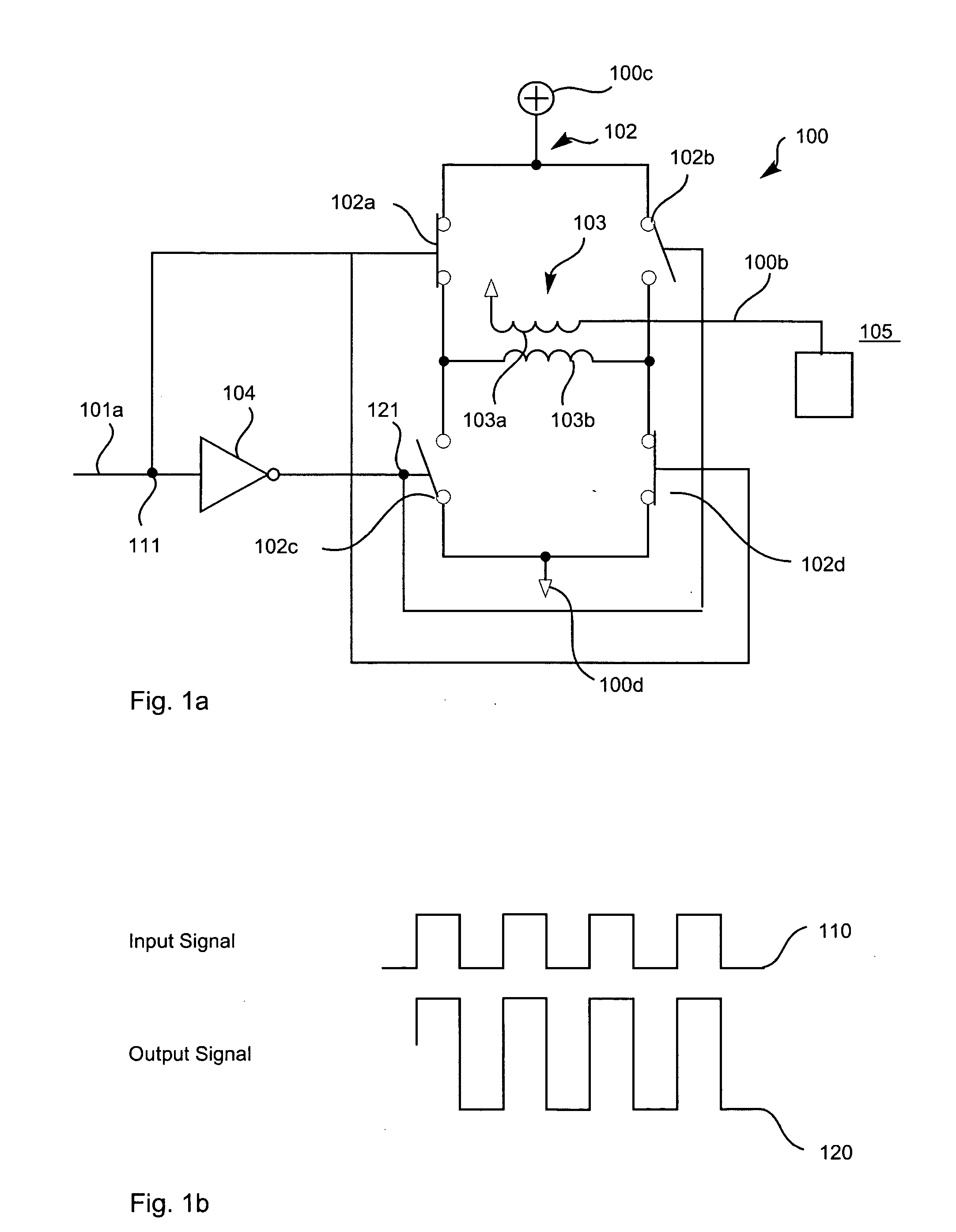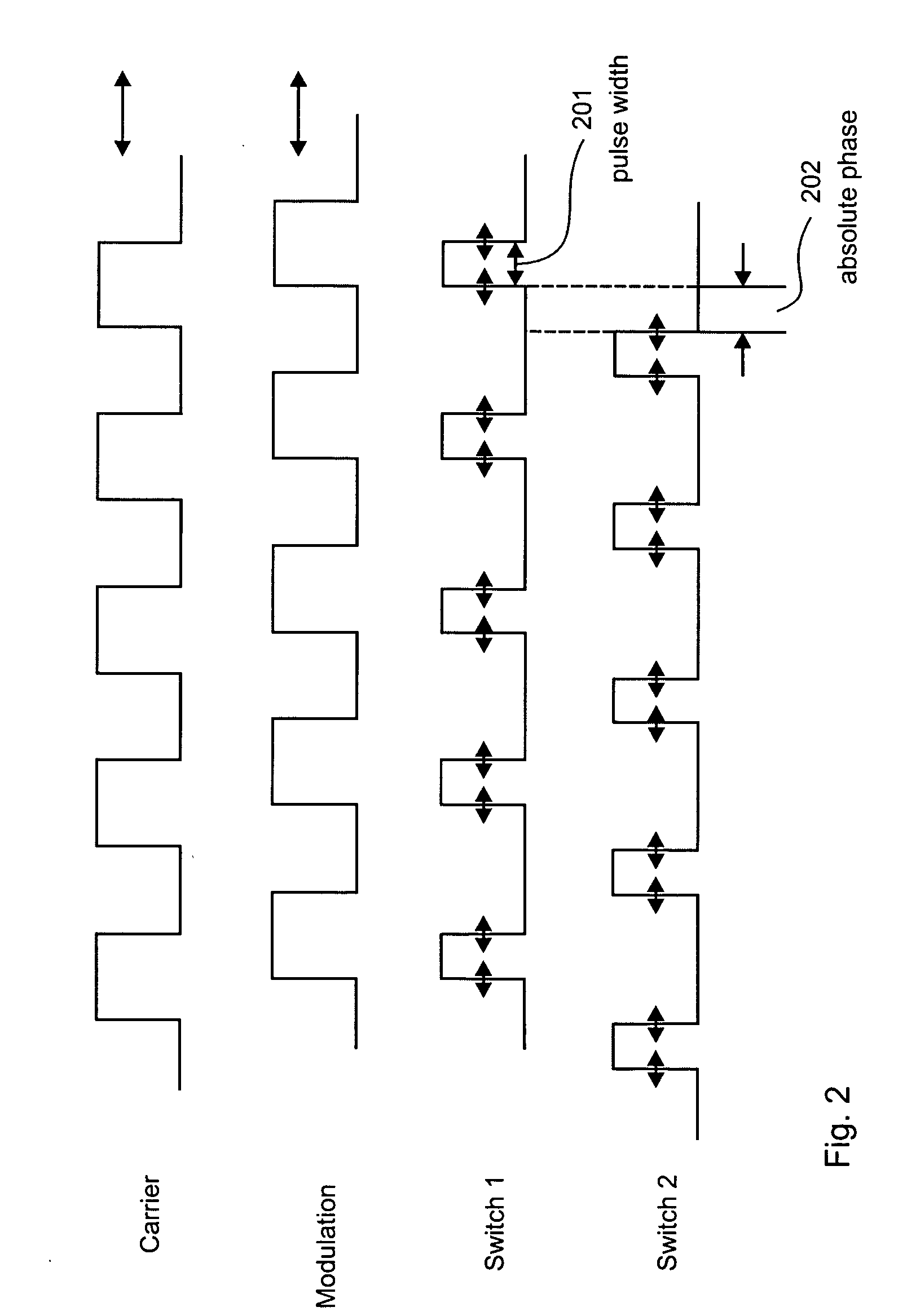Transmit signal generator and method
a technology of transceiver and signal, applied in the direction of parametric amplifier, modulation, transmitter/receiver shaping network, etc., can solve the problems of affecting the reception of the signal by the receiver, affecting the efficiency of the receiver, and introducing modulation into the transmitted signal
- Summary
- Abstract
- Description
- Claims
- Application Information
AI Technical Summary
Problems solved by technology
Method used
Image
Examples
Embodiment Construction
[0026]FIG. 1A illustrates a power amplifier (PA) output stage 100. The output stage 100 is primarily in the form of an H bridge 102 that is disposed between first and second supply voltage ports, 100c and 100d. The H bridge circuit 102 is primarily formed from two circuit branches. A first circuit branch has a first end thereof coupled with the first supply voltage port 100c, where a first side of a first high side switching circuit 102a is coupled thereto. Coupled to the second side of the first high side switching circuit 102a is a first end of a primary winding 103b of a transformer 103. Coupled to the second end of the primary winding 103b is a second low side switching circuit 102d, which is further coupled with the second supply voltage port 100d, terminating the first circuit branch. A second circuit branch has a first end thereof coupled with the first supply voltage port 100c, where a first side of a second high side switching circuit 102b is coupled thereto. Coupled to the...
PUM
 Login to View More
Login to View More Abstract
Description
Claims
Application Information
 Login to View More
Login to View More - R&D
- Intellectual Property
- Life Sciences
- Materials
- Tech Scout
- Unparalleled Data Quality
- Higher Quality Content
- 60% Fewer Hallucinations
Browse by: Latest US Patents, China's latest patents, Technical Efficacy Thesaurus, Application Domain, Technology Topic, Popular Technical Reports.
© 2025 PatSnap. All rights reserved.Legal|Privacy policy|Modern Slavery Act Transparency Statement|Sitemap|About US| Contact US: help@patsnap.com



